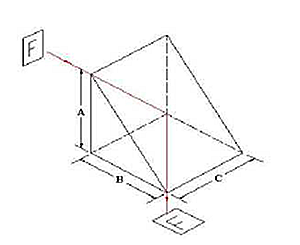
1. Right angle prism
Right angle prism is often used to implement beam steering of 90˚ and 180˚. The picture which through 90˚turning prism rotates 90˚, which through 180˚ turning prism rotates 180˚.

2. Pentagonal prism
It has two important features: first, although the light turned 90˚, but neither rotating nor specular reflection. Second, it is a fixed steering angle device, that is to say: All transmitted light are deflected 90˚, so it is a key component rangefinder and SLR cameras can also use it. The reflecting surface of the prism plate aluminum and coat with black paint for protection.
Neither the rotation nor reverse
90˚ fixed bias


3. Right Angle Roof Prism
90˚ steering
positive image
Opening a 90˚ angle at the slope of right angle prism, it is used both to light turn 90˚ and a positive image. (Special specifications, can provide tailor-made.)


4. Corner cube (mirror)
Notable feature of the corner cube is that for any one incident ray that through the pupil, regardless of the size of the angle of incidence, the light is reflected back to the original direction, the angle error is determined by the precision machining of prism, a corner cube is often useful to in the light steering difficult or difficult to control situations. (Special specifications can provide tailor-made).


5. Dove prism
A Dove prism is a type of reflective prism which is used to invert an image. Dove prisms are shaped from a truncated right-angle prism. A beam of light entering one of the sloped faces of the prism undergoes total internal reflection from the inside of the longest (bottom) face and emerges from the opposite sloped face. Images passing through the prism are flipped, and because only one reflection takes place, the image is inverted but not laterally transposed.
Dove prisms have an interesting property that when they are rotated along their longitudinal axis, the transmitted image rotates at twice the rate of the prism. This property means they can rotate a beam of light by an arbitrary angle, making them useful in beam rotators, which have applications in fields such as interferometry, astronomy, and pattern recognition.

